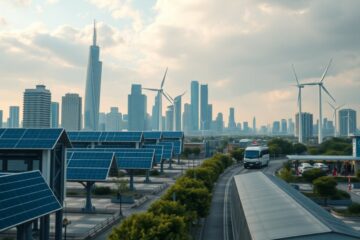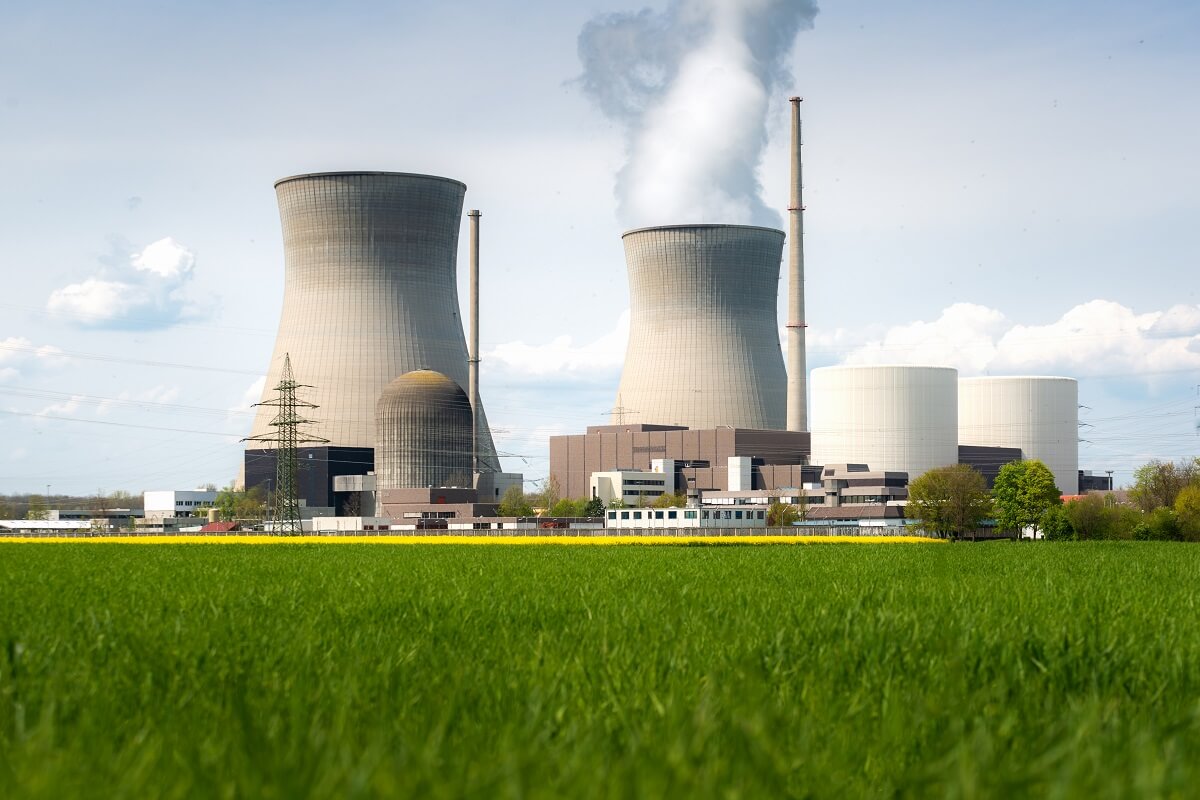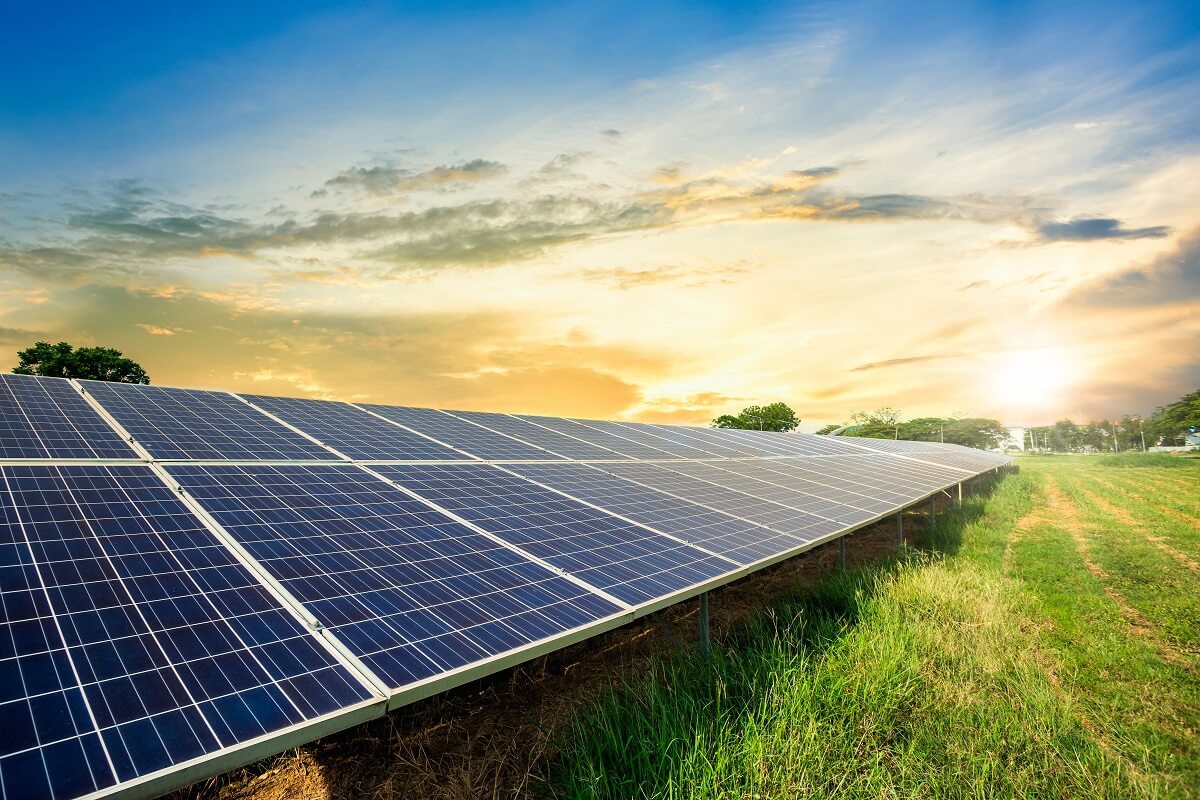Exploring the significance of nuclear plants reveals an essential aspect of sustainable energy solutions. As the world faces environmental challenges such as climate change and air pollution, it is crucial to understand the crucial role that nuclear power can play in preserving our planet. Despite the controversies surrounding nuclear energy, it remains a powerful tool in the fight against carbon emissions and the depletion of natural resources.
Table of Contents
Key Takeaways:
- Nuclear plants play a crucial role in reducing greenhouse gas emissions: They provide a large amount of energy without emitting harmful greenhouse gases like carbon dioxide, making them a valuable tool in the fight against climate change.
- Nuclear power is a reliable and consistent energy source: Unlike renewable energy sources like wind or solar power, nuclear power can provide a steady supply of electricity 24/7, making it a dependable option for meeting energy demands.
- Nuclear plants help conserve land and protect wildlife: By generating a significant amount of power in a confined space, nuclear plants help minimize the need for large land areas to be cleared for energy production, thus preserving natural habitats for wildlife.
- Nuclear energy contributes to energy security: Diversifying energy sources by incorporating nuclear power into the energy mix reduces dependence on fossil fuels, making countries less vulnerable to fluctuations in oil and gas prices and supply disruptions.
- Nuclear energy can complement renewable energy sources: While renewable energy sources are vital for a sustainable future, nuclear power can provide a stable base load of electricity, filling in the gaps when renewables are unable to meet demand due to factors like weather conditions.
The Fundamentals of Nuclear Energy
Some of the key players in the quest for sustainable energy solutions are nuclear power plants. These facilities harness the power of nuclear reactions to generate electricity, providing a reliable and low-carbon energy source that can help combat climate change.
How Nuclear Plants Work
Fundamentally, nuclear plants operate by splitting uranium atoms in a process called nuclear fission. This reaction releases a tremendous amount of energy in the form of heat, which is used to boil water and produce steam. The steam then drives turbines connected to generators, ultimately producing electricity.
Behind the intricate process lies strict safety measures to prevent accidents and protect the environment. Nuclear reactors are equipped with multiple layers of containment and sophisticated control systems to ensure the safe operation of the plant at all times.
The Science Behind Nuclear Reactions
Fundamentally, nuclear reactions involve the splitting of atomic nuclei or the combining of nuclei to release energy. In nuclear power plants, the primary reaction utilized is fission, where a neutron collides with a uranium atom, causing it to split into two smaller atoms and releasing more neutrons in the process. These additional neutrons then collide with other uranium atoms, creating a chain reaction that sustains the energy release.
The Environmental Impact of Energy Sources
The Carbon Footprint of Traditional Energy
Footprint Now, let’s examine the carbon footprint of traditional energy sources such as coal, oil, and natural gas. These fossil fuels are known to release large amounts of carbon dioxide and other greenhouse gases into the atmosphere when burned for energy production. This leads to the worsening of the greenhouse effect, which contributes to global warming and climate change. The extraction, transportation, and burning of these fossil fuels also release other harmful pollutants into the air, water, and soil, further degrading the environment.
Comparing Nuclear Energy to Fossil Fuels and Renewables
The With the rising concerns over climate change and the environmental impacts of traditional energy sources, nuclear energy has emerged as a more sustainable alternative. Let’s compare nuclear energy to fossil fuels and renewables in terms of environmental impact:
| Nuclear Energy | Fossil Fuels and Renewables |
| Produces minimal greenhouse gas emissions | High greenhouse gas emissions |
| Does not contribute to air pollution | Contributes to air pollution |
| Has a small land footprint | Requires large land areas for installations |
Energy Nuclear power plants do not emit carbon dioxide or other greenhouse gases during operation, making them a cleaner energy option compared to fossil fuels. Additionally, nuclear energy does not produce harmful air pollutants such as sulfur dioxide, nitrogen oxides, and particulate matter, which are commonly released by coal and oil-fired power plants. By reducing reliance on fossil fuels and transitioning to nuclear energy and renewables, we can significantly reduce our carbon footprint and mitigate the impacts of climate change.
Nuclear Energy as a Sustainable Option
Unlike traditional fossil fuel power plants, nuclear plants offer a sustainable alternative that can help in saving nature. With advancements in technology and safety measures, nuclear energy has proven to be a reliable and efficient source of power with reduced environmental impact. Let’s delve deeper into the role of nuclear plants in fostering sustainability.
Longevity of Nuclear Fuel Resources
One of the key advantages of nuclear energy is the longevity of nuclear fuel resources. Uranium, the primary fuel used in nuclear reactors, is abundant and can sustain the energy needs of the planet for centuries to come. Unlike finite fossil fuel reserves, nuclear fuel resources have the potential to provide a consistent and reliable source of power without causing environmental degradation.
Moreover, ongoing research and development in nuclear technology have led to the exploration of alternative fuel sources such as thorium, which could further extend the lifespan of nuclear energy production. By investing in innovative solutions and efficient fuel management, nuclear plants can play a crucial role in ensuring a sustainable energy future.
Waste Management and Recycling Techniques
Fuel waste management and recycling techniques are integral components of the nuclear energy industry. Contrary to popular misconceptions, nuclear waste can be effectively managed and recycled to minimize environmental impact. Advanced reprocessing methods allow for the extraction of valuable isotopes from spent fuel, reducing the volume of waste that requires long-term storage.
Sustainable practices such as recycling fuel elements and utilizing reprocessed fuel help to maximize the energy output of nuclear plants while minimizing the generation of long-lived radioactive waste. By employing stringent safety protocols and state-of-the-art recycling technologies, nuclear facilities can operate efficiently and environmentally responsibly, further solidifying nuclear energy as a sustainable option for the future.
Biodiversity and Ecosystems Preservation
Despite the critical role that energy production plays in sustaining modern society, it also poses significant threats to biodiversity and ecosystems. The construction and operation of traditional fossil fuel power plants have led to widespread habitat destruction and pollution, resulting in the decline of many species and the degradation of valuable ecosystems.
Reducing Habitat Destruction Caused by Energy Production
Preservation efforts are increasingly important in mitigating the environmental impact of energy production. Nuclear power plants offer a solution to this dilemma by requiring far less land than equivalent solar or wind farms. By concentrating energy production in a smaller footprint, nuclear plants help reduce habitat destruction and minimize the disruption of wildlife migration patterns.
For instance, a nuclear power plant can produce a significant amount of energy using a fraction of the land required for a solar or wind farm. This compact design allows for the preservation of valuable natural habitats while meeting the growing energy needs of society.
Nuclear Energy’s Minimal Land Footprint
On top of reducing habitat destruction, nuclear energy’s minimal land footprint also contributes to the preservation of ecosystems and biodiversity. The compact nature of nuclear plants means they can be situated in areas already impacted by human activity, such as industrial zones, without further encroaching on pristine natural landscapes.
Impact of Nuclear Energy on Climate Change
Nuclear Energy’s Role in Reducing Greenhouse Gas Emissions
Keep in mind that nuclear energy is a low-carbon energy source that plays a crucial role in reducing greenhouse gas emissions. Unlike fossil fuels such as coal, oil, and natural gas, nuclear power plants produce electricity without emitting carbon dioxide, the primary greenhouse gas responsible for climate change.
Nuclear power is one of the most effective ways to combat climate change because it provides a reliable source of energy that can replace carbon-intensive fuels in electricity generation. By incorporating more nuclear energy into our energy mix, we can significantly reduce our carbon footprint and work towards a more sustainable future.
The Impact on Global Temperature and Weather Patterns
With nuclear energy’s low carbon footprint, it has the potential to mitigate the impact of global warming on temperature and weather patterns. By reducing greenhouse gas emissions, nuclear power helps in stabilizing global temperatures and mitigating the extreme weather events associated with climate change.
| Reduces greenhouse gas emissions | Stabilizes global temperatures |
Weather patterns and global temperatures are intricately connected, and the clean energy produced by nuclear power plants can contribute to a more stable climate. By investing in nuclear energy, countries can work towards a future with fewer climate-related disasters and a healthier planet for future generations.
| Reduces carbon footprint | Mitigates extreme weather events |
Challenges and Risks of Nuclear Energy
Safety Concerns and the Risk of Accidents
Your safety concerns regarding nuclear energy are valid. While nuclear power plants are designed with multiple layers of safety systems to prevent accidents, the risk of mishaps still exists. The most well-known nuclear disaster, the Chernobyl incident, serves as a reminder of the catastrophic consequences that can occur when things go wrong.
Energy accidents like Chernobyl and Fukushima have had long-lasting environmental and health impacts on surrounding areas. The release of radioactive materials into the environment following a nuclear accident can lead to long-term health risks, ecosystem disruption, and economic loss. This highlights the critical importance of stringent safety measures and constant vigilance in the nuclear industry.
The Debate Over Radioactive Waste Disposal
Waste disposal remains one of the most contentious issues surrounding nuclear energy. Radioactive waste produced by nuclear power plants poses significant challenges in terms of storage and disposal. The debate over how to safely manage this waste revolves around finding secure long-term storage solutions that will not harm the environment or public health.
Debate continues over whether deep geological repositories or other methods are the best approach. The goal is to contain and isolate the radioactive materials from the environment for thousands of years to prevent any potential harm to future generations.
Nuclear Energy in the Future of Energy Policy
Integrating Nuclear Plants with Renewable Energy Sources
To address the increasing demand for clean and sustainable energy, integrating nuclear plants with renewable energy sources presents a promising solution. Nuclear energy, with its reliable power generation capabilities, can complement the intermittent nature of renewable sources such as wind and solar. By combining these energy sources, a more stable and consistent energy supply can be achieved, reducing the reliance on fossil fuels and cutting down carbon emissions.
Furthermore, nuclear plants can act as a baseload power source, providing a constant stream of electricity to complement the variability of renewable energy generation. This synergy between nuclear energy and renewables can create a more resilient and sustainable energy grid, ensuring reliable power supply while meeting environmental goals.
Policy Considerations and Public Opinion
The policy landscape surrounding nuclear energy is crucial in determining its future role in the energy sector. The establishment of supportive policies, such as carbon pricing or incentives for nuclear development, can promote the growth of nuclear energy and its integration with other clean energy sources.
With careful consideration of safety regulations, waste management strategies, and public engagement, the policy framework can address concerns and build public trust in nuclear energy as a viable and sustainable option for the future energy mix.
Conclusion
Following this discussion, it is clear that nuclear plants play a crucial role in saving nature by providing a sustainable energy solution. By generating electricity without burning fossil fuels, nuclear plants help reduce greenhouse gas emissions and combat climate change. Additionally, they have a small environmental footprint compared to other forms of energy production, making them a cleaner alternative for powering our modern world.
In conclusion, the continued development and utilization of nuclear plants can contribute significantly to preserving our planet’s natural resources and biodiversity. As we strive towards a more sustainable future, it is essential to recognize the important role that nuclear energy plays in protecting our environment and securing a cleaner, greener world for future generations.
FAQ
Q: What is the role of nuclear plants in saving nature?
A: Nuclear plants play a crucial role in saving nature by providing a sustainable energy solution that reduces reliance on fossil fuels and decreases greenhouse gas emissions.
Q: Are nuclear plants environmentally friendly?
A: While there are concerns about nuclear waste and safety, nuclear plants are considered environmentally friendly due to their low carbon emissions and ability to produce large amounts of energy without contributing to air pollution.
Q: How do nuclear plants contribute to sustainability?
A: Nuclear plants contribute to sustainability by producing a consistent and reliable source of energy that helps reduce the exploitation of natural resources and mitigates the impact of climate change.
Q: What are the advantages of nuclear energy over other forms of energy?
A: Nuclear energy has several advantages, including high energy density, low greenhouse gas emissions, and a consistent power supply that is not dependent on weather conditions like solar or wind energy.
Q: How can nuclear plants help combat climate change?
A: Nuclear plants can help combat climate change by providing a low-carbon alternative to fossil fuels, thereby reducing the amount of greenhouse gases released into the atmosphere and slowing down the progression of global warming.

Our contributing author is a passionate advocate for eco-friendly living and sustainability. With a background in eco-life, they are dedicated to inspiring and empowering individuals to adopt environmentally conscious lifestyles. Through insightful articles, they share practical tips, innovative solutions, and thought-provoking perspectives to promote a greener, more sustainable world. Join them on the journey towards eco-smart living and discover how small choices can make a big impact. 🌱









